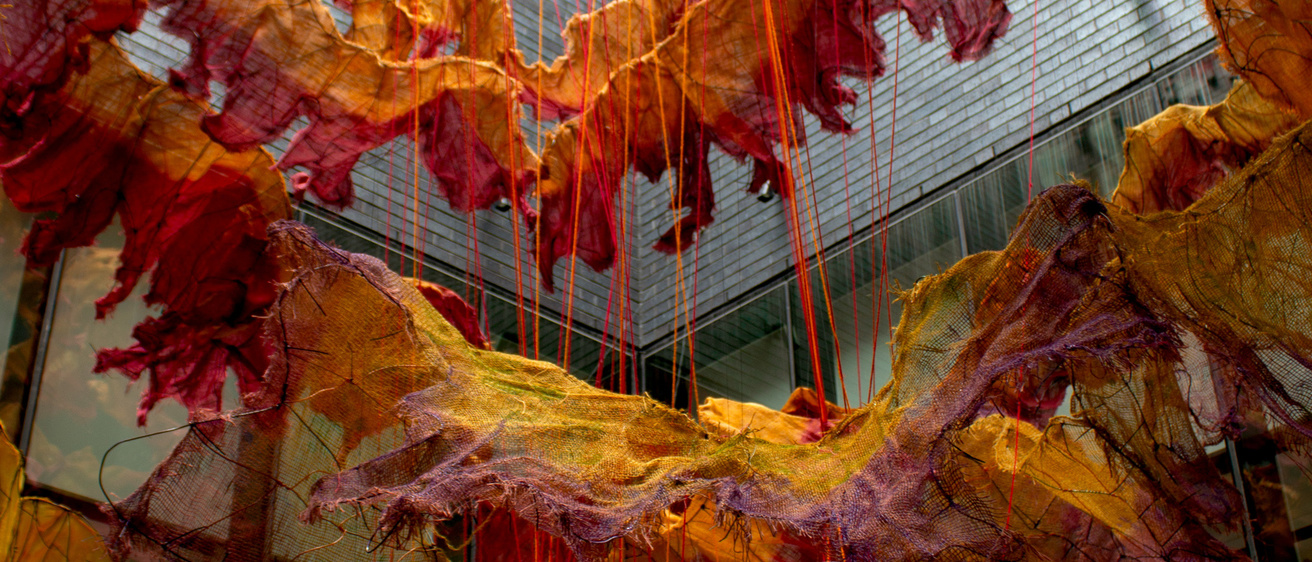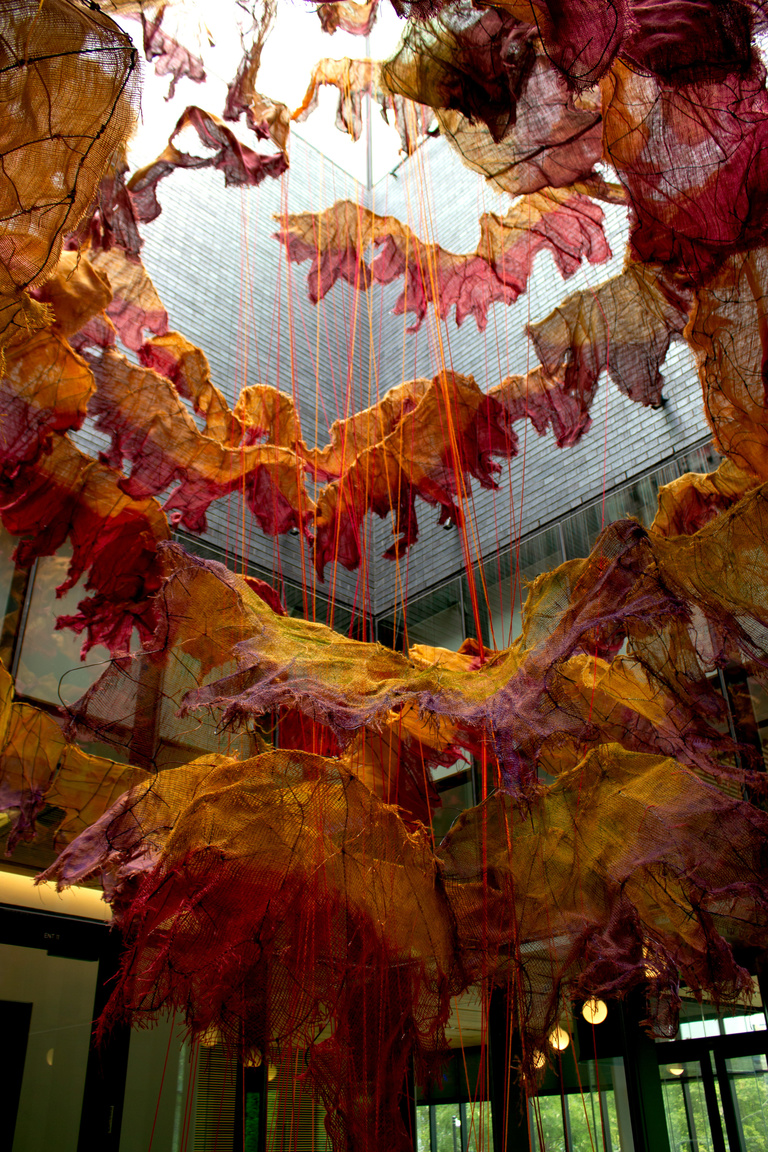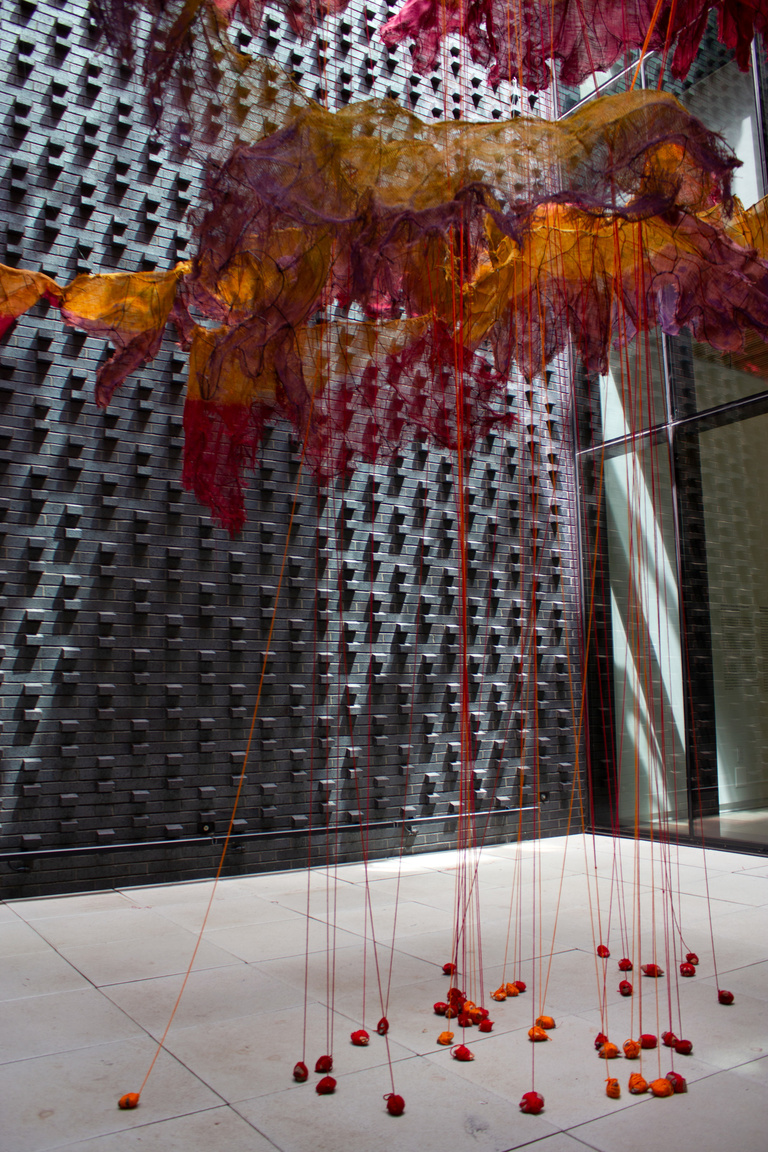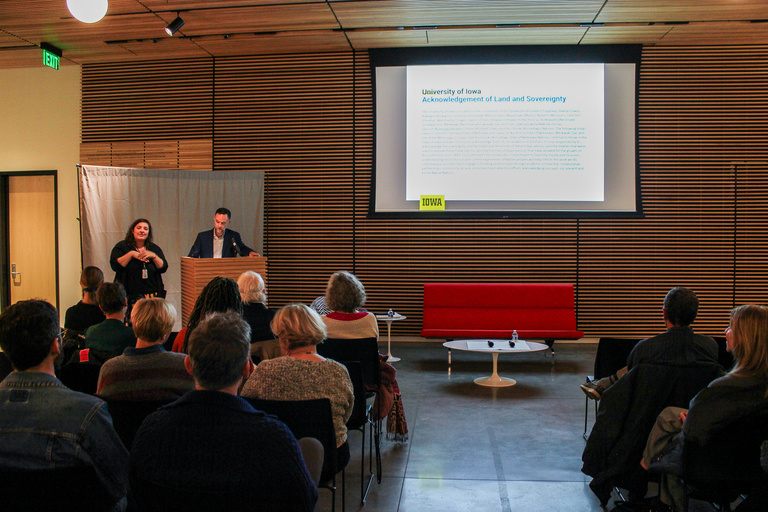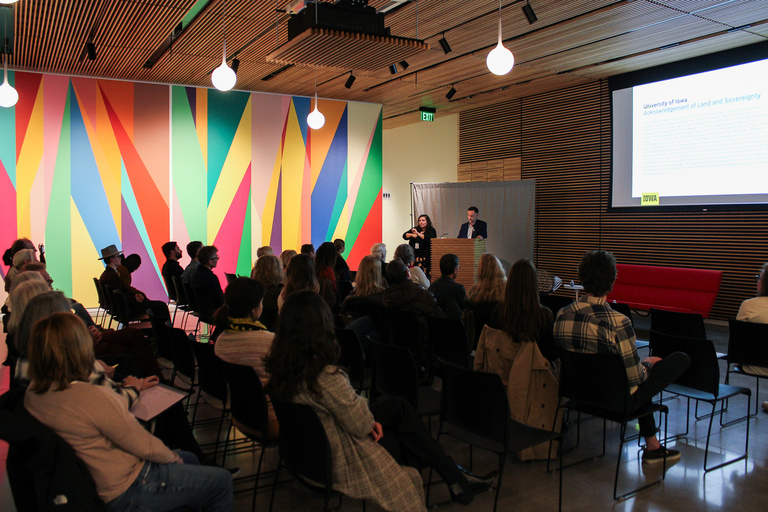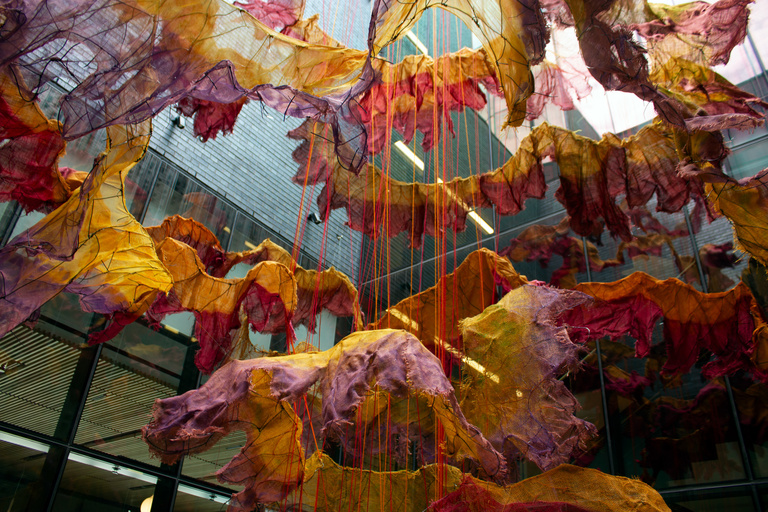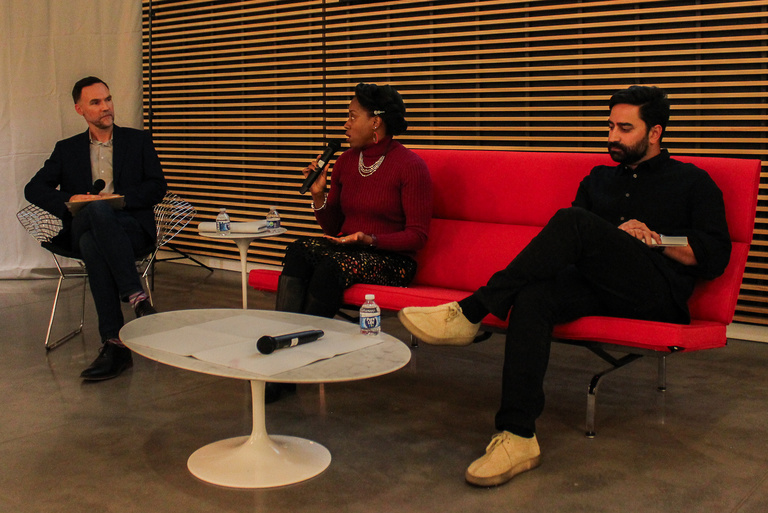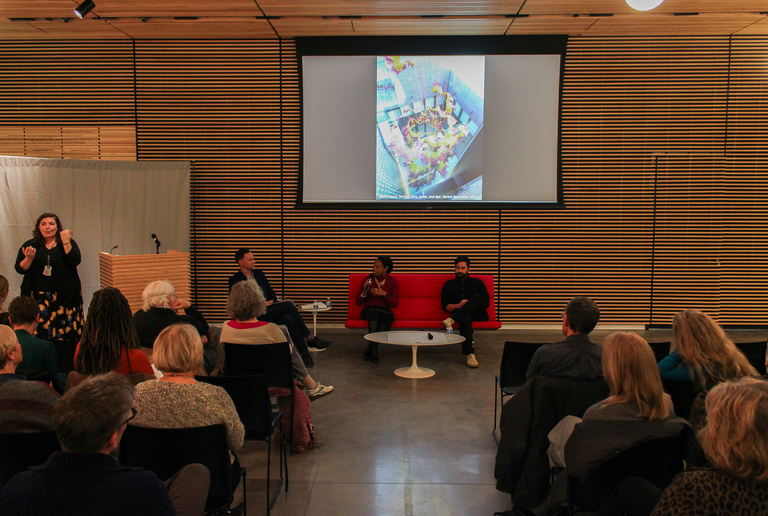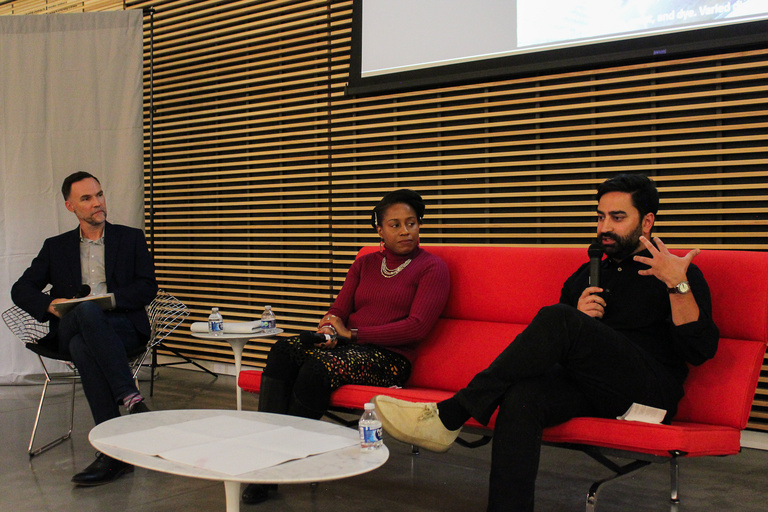July 2023 - 2024

Nnenna Okore posing with her artwork "Spirit Dance" at the Stanley Museum of Art 2023 © Stanley Museum of Art
Commissioned by the Stanley Museum of Art, Spirit Dance by artist Nnenna Okore is the second installment in the museum’s Thresholds series, which highlights the work of Iowa-affiliated artists.
Spirit Dance, is a site-specific sculptural work made of vibrantly dyed jute, burlap, and cheesecloth framed by thin wire structures, installed in the Stanley’s lightwell, an open-air space that spans nearly four floors at the center of the building. It was on display at the Stanley Museum of Art from July 2023 - 2024 and has been one of the museum's most popular exhibits.
Okore describes Spirit Dance as representative of the African-inspired notion that all forms, including humans, nonhumans, and spirits, possess an agentic force that is capable of doing things. Spirit Dance calls attention to these forces—like wind, which causes the sculpture to sway in a manner suggestive of dance. Compelling viewers to acknowledge these forces by making their effects visible in Spirit Dance, Okore hopes, will encourage viewers to be more sensitive to their environment and the forces at work around them.
Nnenna Okore is an internationally acclaimed artist and an alumna of UIowa's MA and MFA programs. She is involved in numerous environmental art projects and exhibitions designed to produce research, dialogue and artmaking about current waste issues. Largely deriving inspiration from her natural surroundings, Okore creates delicate works of art using biodegradable materials like bioplastics, cheesecloth and fibers to engender awareness about sustainable practices in the art field.
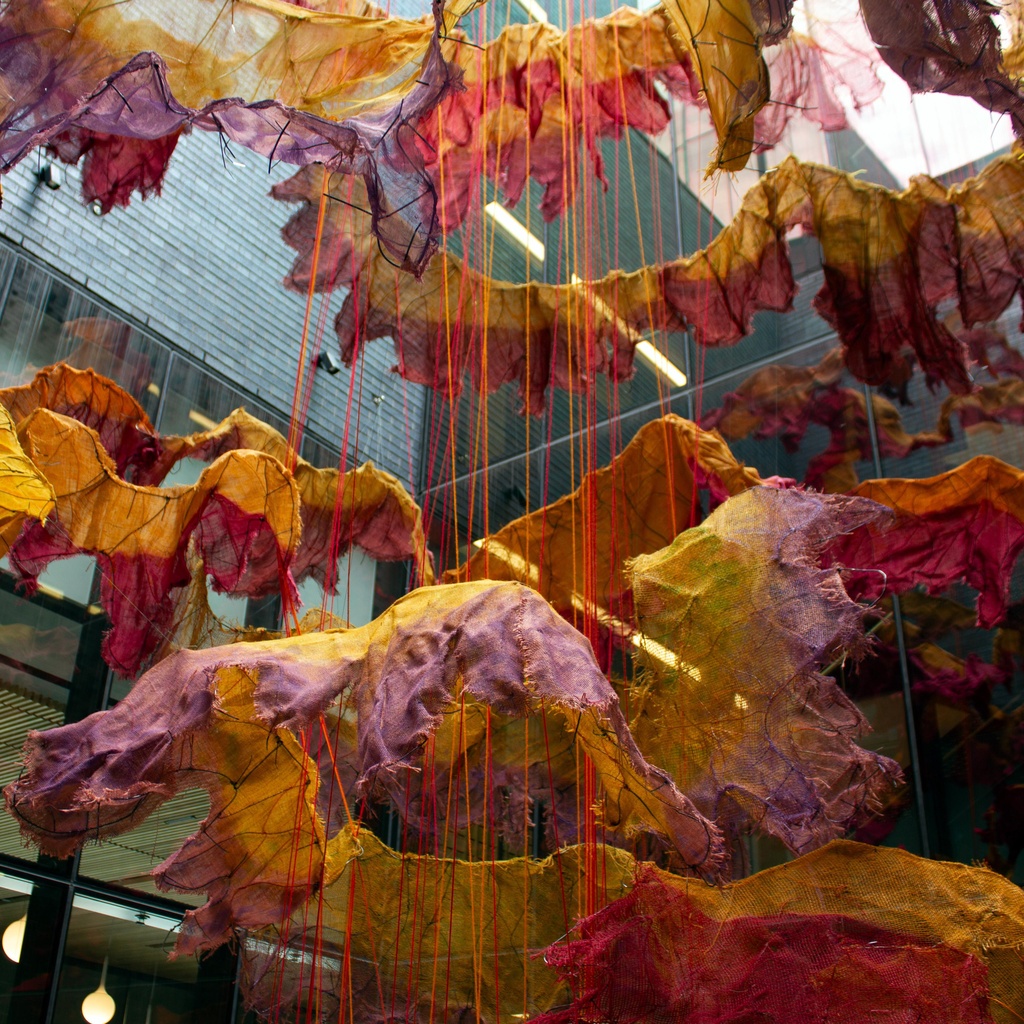
Nnenna Okore | Art as Experience
Join us for a thought-provoking conversation between the artist behind “Spirit Dance,” Nnenna Okore, and environmental historian Robert Rouphail at the Stanley Museum of Art on November 16, 2023. Their insights will inspire and challenge you to think about the relationship between art, the environment and social justice.
In her conversation with Rouphail, Okore will discuss her process for creating her work as well as the themes and inspirations behind it. She will also talk about how her work...
In her conversation with Rouphail, Okore discussed her process for creating her work as well as the themes and inspirations behind it. She spoke about how her work is informed by indigenous African perspectives.
Robert Rouphail is a historian of modern Africa and the Indian Ocean at the UIowa College of Liberal Arts and Sciences. He teaches across the fields of African, global and environmental history. His courses range from surveys of modern African and global history to histories of race and empire in the Indian Ocean World to global environmental history and disaster studies courses.
Rouphail brought his expertise in environmental history to the conversation, exploring how Okore's work connects with broader themes of identity, community and the natural world.
Nnenna Okore discussed how ‘Spirit Dance’, among others, enlivens socio-material experiences that can interrupt material and immaterial alienations, disembodiments and dichotomies between art and life. She underscored how, in the face of ecological challenges and devastations, people can become more attuned to the planet and its ecosystems by intermingling with materials, people and spaces.
Watch the complete talk here
Art as Experience | Nnenna Okore
Insights from the artist and panel on "Spirit Dance"
Spirit Dance: Inside Nnenna Okore's Sustainable Art
